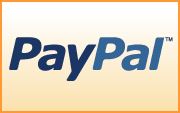
The idea behind PayPal is simple: use encryption software to allow people to make financial transfers between computers. That simple idea has turned into one of the world's primary methods of online payment. Despite its occasionally troubled history, including fraud, lawsuits and zealous government regulators, PayPal now boasts over 100 million active accounts in 190 markets worldwide.
PayPal is an online payment service that allows individuals and businesses to transfer funds electronically. Here are some of the things you might use PayPal for: 1) Send or receive payments for online auctions at eBay and other Web sites 2) Purchase or sell goods and services 3) Make or receive donations 4) Exchange cash with someone.
You can send funds to anyone with an e-mail address, whether or not they have a PayPal account. To receive the funds, though, the recipient must have a PayPal account associated with that e-mail address. Basic PayPal accounts are free, and many financial transactions are free as well, including all purchases from merchants that accept payments using PayPal. If you have a PayPal account, you can add and withdraw funds in many different ways. You can associate your account with bank accounts or credit cards for more direct transactions, including adding and withdrawing money. Other withdrawal options include using a PayPal debit card to make purchases or get cash from an ATM, or requesting a check in the mail.
PayPal Infrastructure
From a buyer's perspective, PayPal changed the way people exchange money online. Behind the scenes, though, it didn't fundamentally change the way merchants interact with banks and credit card companies. PayPal just acts as a middleman. To understand what that means, consider that credit and debit card transactions travel on several different networks. When a merchant accepts a charge from a card, that merchant pays an interchange, which is a fee of about 10 cents, plus approximately 2 percent of the transaction amount. The interchange is made up of a variety of smaller fees paid to all the different companies that have a part in the transaction: the merchant's bank, the credit card association and the company that issued the card. If someone pays by check, a different network is used, one that costs the merchant less but moves more slowly.
What part does PayPal play in all this? Both buyer and seller deal with PayPal instead of each other. Both sides have provided their bank account or credit card information to PayPal. PayPal, in turn, handles all the transactions with various banks and credit card companies, and pays the interchange.
Revenue Model
PayPal makes its own money in two ways. The first is the fees they charge to a payment's recipients. Though most transactions are free for the average user, merchants pay a fee on transactions. PayPal also collects interest on money left in PayPal accounts. All the money held in PayPal accounts is placed into one or more interest-earning bank accounts. An account holder doesn't receive any of the interest gained on the money while it sits in a PayPal account.
 RSS Feed
RSS Feed